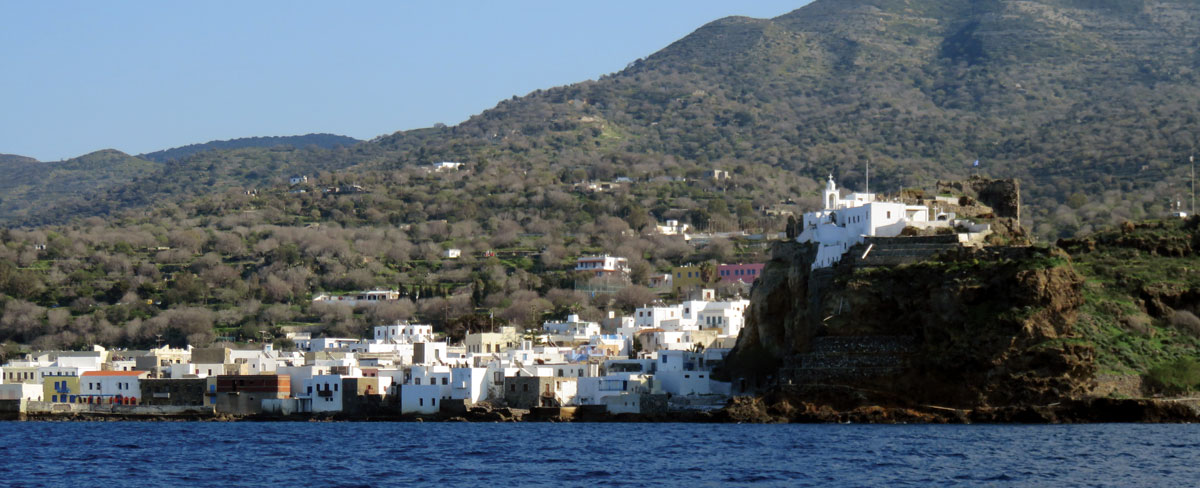
The name of the island comes from antiquity, from the Pre-Hellenes, and its meaning is not known. However, Greek Mythology has it that during the war of the Titans with the Giants, god Poseidónas of the sea chased the Giant Polyvótis and caught up with him close to N. Kós, and there he cut a part of the island and threw it at the giant to kill him. This part crushed the giant out and formed the island of Nísyros. Indeed, the crushed giant groans and sighs every now and then, and you can feel him through the existing volcano.
During the period of Minoan rule, the island was conquered and colonised by Cretans (13th century BC). Homer includes it amongst the islands that sent ships to fight in the Trojan war, along with the other Greeks. In the 11th century BC, Nísyros was conquered by Dorians from mainland Greece. During the time of the Persian wars, the island was under the rule of Alikarnassós and some of its ships took part on the side of the Persians. During the battle of Salamína (480BC), they abandoned the Persians and sailed and fought on the side of the Greeks. After the Greek wars, Nísyros joined the Athenian Allies. In later years, the island followed the fate of the rest of the Dodekánisa, i.e. Roman rule, Byzantine, Frankish rule (14th – early 16th centuries), Turkish rule (16th – early 20th centuries), Italian domination and finally reunion with Mother Greece in 1948.
The island is famous for its clear atmosphere and its greenery. It looks like a pyramid from afar. There are many warm springs along the coastal area, for which the island has been famous since antiquity.

You really must aim to see the Volcano. It is half-extinct. The explosion that occurred 24000 years ago gave the sides of the island a covering of limestone, of approximately 100m thick. The caldera had a diametre of 3km. Inside the chasm of the caldera, there are 5 craters, the largest being Stéphanos (diametre 350m, depth 25m) and the next in size is Aléxandros (diametre 100m, depth 30m). The other three are small. There are buses from Mandráki that go to the volcano, where you can be guided around (do not wear plastic shoes, and it is advisable to take water with you).
It is also worth visiting the Monastery of Panagiá of Spilianí, the Venetian castle (see PLAN Mandráki), the Palaiókastro (ancient citadel 2600 years old), the village of Nikiá with its beautiful mosaics made of pebbles and its Venetian castle as well as the village of Emporeió, which hangs inside the crater.
Celebrations: On the 21st June is the feast of Ágios Nikítas of Nísyros (martyred in Chíos), on the 15th August the feast of Panagía (Panagiá of Spilianí celebrates in style with food, wine, dancing, as does Kyrá Panagiá in Emporeió) as well as other feasts, which you can learn about at the Town Hall. Another point of interest is a Nisyrian wedding (if you happen to be around you will celebrate for three days).
Flavours: The meat of Nísyros is well known and the local moussáka has a special taste.





